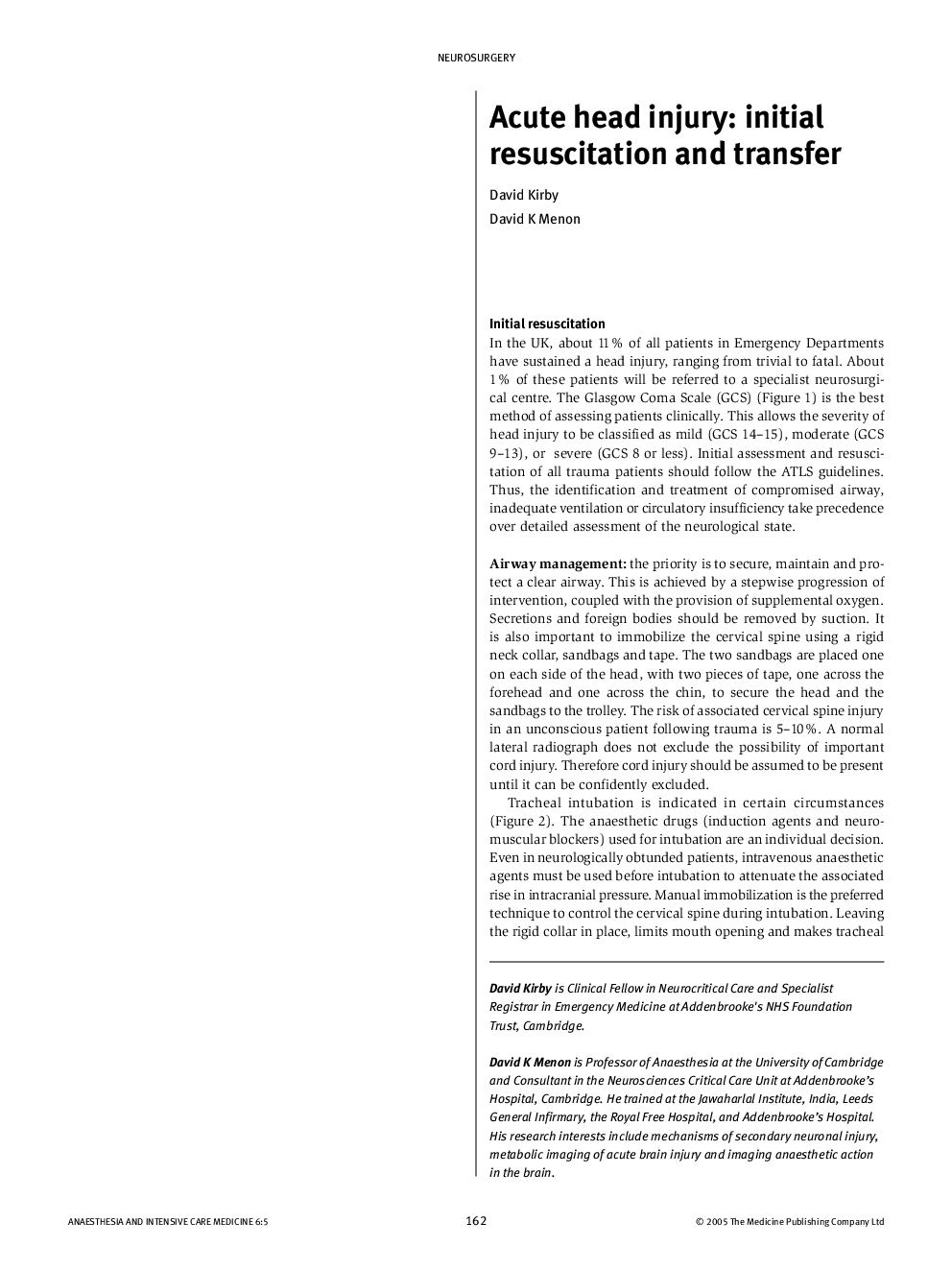| Article ID | Journal | Published Year | Pages | File Type |
|---|---|---|---|---|
| 9089511 | Anaesthesia & Intensive Care Medicine | 2005 | 5 Pages |
Abstract
In the UK, about 11% of all patients in Emergency Departments have sustained a head injury, ranging from the trivial to fatal. About 1% of these patients are referred to specialist neurosurgical centres. Initial assessment and resuscitation of all trauma patients should follow the guidelines of ATLS (advanced trauma life support). Thus, the identification and treatment of compromised airway, inadequate ventilation or circulatory insufficiency take precedence over detailed assessment of neurological state. The Glasgow Coma Scale (GCS) is the best method to assess patients clinically and to assess the severity of head injury. The authors describe the management of the airway, breathing and circulation and include the NICE guidelines for the acute management of head-injured patients. Patients with head injuries are at risk during transfer. These risks can be reduced by adequate resuscitation and optimization of systemic haemodynamics. Good communication is important for a successful transfer. The authors describe the timing of transfer, the escorting team, monitoring, the equipment required for the journey, and the handover.
Related Topics
Health Sciences
Medicine and Dentistry
Anesthesiology and Pain Medicine
Authors
David Kirby, David K Menon,
